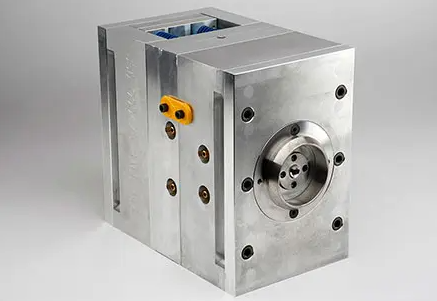
Yes, urethane (commonly referred to as polyurethane) can be injection molded. Polyurethane injection molding is a widely used process for producing parts and products with excellent mechanical properties, durability, and versatility. Here’s an overview of the process and key considerations:
Key Considerations for Injection Molding Polyurethane
1. Material Properties
- Versatility: Polyurethane can be formulated in various hardness levels, from soft elastomers to rigid plastics.
- Durability: Polyurethane parts exhibit excellent abrasion resistance, impact strength, and flexibility.
- Chemical Resistance: Good resistance to oils, solvents, and many chemicals.
2. Processing Temperatures
- Melt Temperature: Polyurethane needs to be heated to a specific melt temperature, usually between 180°C to 240°C (356°F to 464°F), depending on the specific formulation.
- Mold Temperature: The mold temperature is typically maintained between 20°C and 70°C (68°F to 158°F) to ensure proper flow and curing.
3. Injection Molding Machine
- Specialized Equipment: Polyurethane requires specific machinery designed to handle its unique properties, including its sensitivity to moisture.
- High Pressure: Adequate pressure is necessary to ensure the material fills the mold completely and achieves the desired part quality.
4. Processing Parameters
- Injection Speed: Moderate to high injection speed is recommended to ensure complete filling of the mold and to avoid defects.
- Curing Time: Proper curing time is essential to ensure the material reaches its final properties and does not warp or shrink excessively.
[elementor-template id=”4330″]
Advantages of Injection Molding Polyurethane
1. Design Flexibility
- Complex Geometries: Injection molding allows for the production of complex shapes and fine details, making it suitable for intricate designs.
- Variety of Forms: Polyurethane can be molded into solid parts, foams, and coatings.
2. Material Properties
- Mechanical Strength: High tensile and tear strength make polyurethane suitable for demanding applications.
- Elasticity: Maintains flexibility over a wide temperature range, making it ideal for dynamic applications.
3. Efficiency
- High Production Rates: Suitable for high-volume production, ensuring consistency and repeatability.
- Minimal Waste: Efficient material utilization and low scrap rates compared to other manufacturing processes.
Applications of Injection Molded Polyurethane
1. Automotive
- Seals and Gaskets: Used in automotive components for their durability and resistance to oils and chemicals.
- Bushings and Mounts: Provide excellent vibration dampening and wear resistance.
2. Consumer Goods
- Footwear: Midsoles, insoles, and other shoe components benefit from polyurethane’s cushioning properties.
- Sporting Goods: Used in various sports equipment for its flexibility and durability.
3. Industrial Applications
- Rollers and Wheels: Used in conveyor systems and material handling equipment for their abrasion resistance.
- Machine Parts: Custom components such as gears and couplings that require high wear resistance.
[elementor-template id=”4331″]
References
- Polyurethane Injection Molding: Offers insights into the specific processes and considerations for injection molding polyurethane.
- SIMTEC Silicone Parts: Discusses the advantages and applications of injection molding polyurethane.
- Chem-Trend: Provides technical details and best practices for molding polyurethane.
Injection molding of polyurethane is a versatile and efficient process that enables the production of high-quality, durable parts for a wide range of applications. By optimizing the molding parameters and using the right equipment, manufacturers can achieve excellent part performance and consistency.
Related Conten: Injection Molding Factory
 DTG Mould Trade Process |
|
| Quote: | According to sample, drawing and specific requirement. |
|---|---|
| Discussion | Mold material, cavity number, price, runner, payment, etc. |
| S/C Signature | Approval for all the items. |
| Advance | Pay 50% by T/T |
| Product Design Checking | We check the product design. If some position is not perfect, or can not be done on the mould, we will send customer the report. |
| Mold Processing | Send report to customer once each week |
| Mold Testing | Send trial samples and try-out report to customer for confirmation |
| Mold Modification | According to customer’s feedback. |
| Balance Settlement | 50% by T/T after the customer approved the trial sample and mould quality. |
| Delivery | Delivery by sea or air. The forwarder can be designated by your side. |
 |
|

